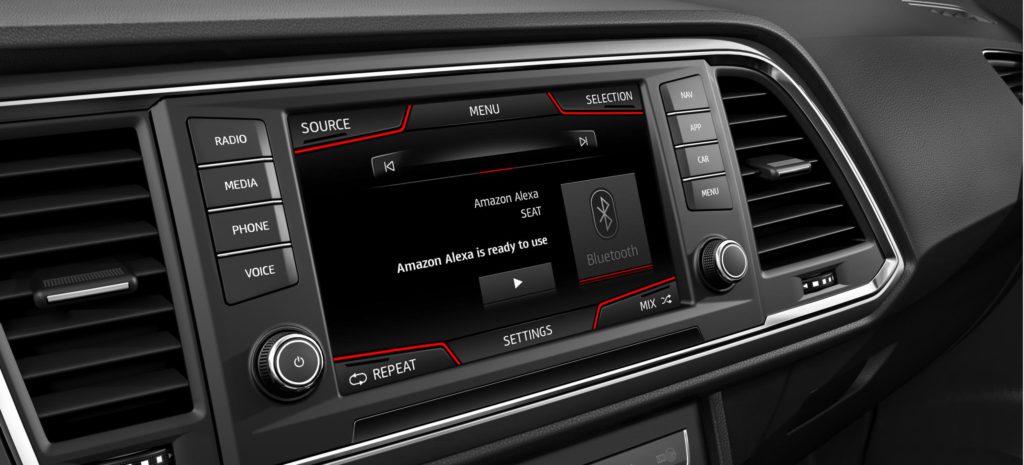SEAT makes waves with Amazon Alexa
16 August 2018

16 August 2018
SEAT is rolling out Amazon’s voice assistant ′Alexa’ to its vehicles. The manufacturer becomes one of a select few utilising the assistant in the automotive space.
The service is activated by a button on the steering wheel, which then allows drivers to use voice commands. It is currently available in the UK on model-year ′19 Leon and Ateca models.
Alexa’s range of skills are the main advantage pushed by the Spanish brand. Over 45,000 skills are installable to the assistant, ranging from music to news and beyond.
′As functionality and connectivity levels increase, we have to find a balance between usability and safety. Introducing Amazon Alexa helps us find that balance,’ said Luca de Meo, president of SEAT.
The Spanish manufacturer, part of the Volkswagen Group, announced its plans to add Alexa into its vehicles at the IAA Frankfurt Motor Show last year and vehicles including the technology are now on sale.
SEAT is not the only manufacturer looking towards virtual assistants as European OEMs aim to bridge the gap between traditional automobiles and the connected world.
BMW is the closest comparison to SEAT as it is also using Alexa to enable a native entertainment system while using a range of skills.
′We are excited to work with BMW to bring the Alexa experience to their drivers,’ said Ned Curic, vice president, Alexa Automotive in October last year. ′Using your voice to enjoy content and interact with Alexa makes a great driving experience even better.’
Meanwhile, Volvo has partnered with Google to provide an android platform capable of providing enhanced infotainment systems and enhanced driver interaction.
′Google’s platform and services will enhance the user experience by enabling more personalisation possibilities, while Android will offer increased flexibility from a development perspective,’ said Henrik Green, senior vice president, Research & Development at Volvo.
The system will also be integrated into Audi’s Q8 sport concept. Which, similarly to SEAT’s solution, is centred on voice commands to enable new entertainment options.